
The following has been gathered from secondary websites, news and presentations.
Some of the terminology contained in the headings and body of these links is misleading. These have been taken from press articles, websites and videos. The use of the word stampede and panic is not what you will find to be the causes of the incidents shown. The information provided is reflecting the articles written and it is being left to you to interoperate what you see and read and come to your own conclusions. Please also
1896

Celebration of the Coronation of Czar Nicholas II Results in the Death of up to 3,000 peasants
1887
The Exeter Theatre Royal fire was a disaster that occurred on 5 September 1887 in Exeter, England. A fire broke out in the backstage area of the Theatre Royal during the production of The Romany Rye by George Robert Sims and produced by Wilson Barrett. The fire caused panic throughout the theatre, with 186 people dying from a combination of the direct effects of smoke and flame, crushing and trampling, and trauma injuries from falling or jumping from the roof and balconies.
1884
A terrible panic occurred on Saturday night at a Place of entertainment in Glasgow called th Star Theatre, frequented chiefly by the working classes.
1883

183 children – 114 boys and 69 girls – mostly between the ages of seven and ten but some as young as three died, while a further 100 were seriously injured.
1878
It all began when an evening concert was in progress at the Colosseum Music Hall and someone shrieked, “Fire!” The resulting panic from the word “fire” created an unstoppable stampede and the crush of the crowd resulted in a “heap of corpses” and a death toll of thirty-seven people, with many other people injured.
1875
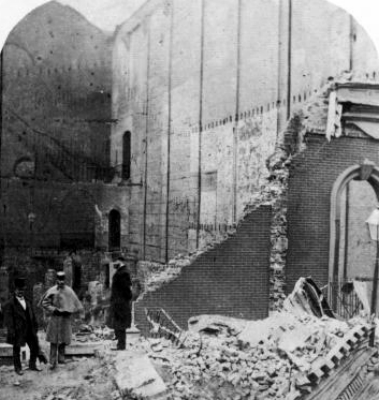
The Brooklyn Theater Fire was a catastrophic theatre fire that broke out on the evening of December 5, 1876 in the city of Brooklyn, New York, United States
1875
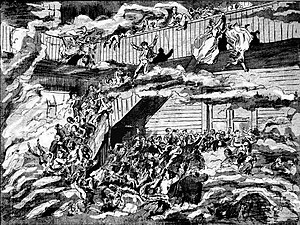
In the sixty-three years and change between The Richmond Theater Fire and the fire at Precious Blood Catholic Church, in Holyoke, Massachusetts America learned how to have man-made disasters. It wasn’t something we wanted to learn how to do by any means, but the Mid-Nineteenth Century’s run-away advances in transportation really didn’t give us much choice in the matter. While the steam engine shortened epic journeys of days or weeks into trips of a few hours by train or a couple of days by steamboat it also brought with it new and horrific ways to kill dozens of people at a time if something went wrong. And, sadly, back in the day things regularly went wrong. Steamboats could collide, sink, their boilers could explode, and they could burn. Trains could collide, derail, run off of bridges, have bridges collapse out from under them…and they could burn.
1872
On 10 October 1872, a tragic event occurred there. During the prayers on Yom Kippur (the Day of Atonement) gas lamps went out. Women and children whose place was up in the gallery, panicked. While fleeing, the staircase collapsed killing 19 people (Jews and one Christian girl). They were buried (except the Christian girl) in a mass grave in the Jewish cemetery which no longer exists.
en.wikipedia.org
1871
In June of 1871, around 900 members from the audience died while the largest theater in Shanghai caught fire. This was one of the most tragic public accidents to have ever occurred in China up to that point in history.
worldatlas.com
1865
FRIGHTFUL ACCIDENT AT DUNDEE— 20 PERSONS KILLED.
A frightful accident occurred at Dundee on Monday evening, January 16. The melancholy occurrence took place at Bell-street Hall, a large concert room situated immediately below the United Presbyterian Church (of which the Rev. Mr. Borwick is the pastor), in Bell-street, Constitution-road. The hall is well-known in Dundee in connection with certain concerts and other entertainments given in the place from time to time by Mr. Springthorpe. The hall is badly constructed, so far as regards the public safety, the chief access being very dangerous.
Entrance to the hall is gained by a broad flight of stairs leading down from Bell-street into the large area beneath the church. The top of the stairs is guarded by an iron gate, and as this opens inward it is not difficult to under- stand the danger that must arise from a great pressure without. On Monday evening a very large crowd of people assembled at the gate desirous of obtaining admission to a promenade concert, which, under the title of “Springthorp’s Exhibition,” had been announced as one of the attractions of New Year’s evening. When the advertised hour arrived the man in charge opened one half of the gate for the purpose of admitting the people to the hall. On this being done, the pressure of the crowd from without was so great that the man was overpowered, and the other half of the gate was burst open. Those in the front rank were swept through the narrow opening, and forced down the stairs with great violence. Much confusion and alarm prevailed, and efforts were made to stem the strong pressure from behind. These for the time, however, proved unavailing. The people next the gate were pushed in a mass down the stairs, and those behind pressed upon them and overthrew them. Before the pressure could be stayed a confused heap of people, several feet deep, were piled up in the small space of about six feet at the bottom of the stairs.
Nearly three-quarters of an hour elapsed before these were extricated from their position, when it was found that nine young women and ten men had beer crushed to death. In addition to the 19 persons who were thus killed, a large number were more or less very seriously injured. The scene is described as most horrible. Suffocation appears in most cases to have been the cause of death, there being few cases of broken limbs. Some of the survivors, however, were much injured in extrication. One or two were extricated only to die in their rescuers’ arms. The checktaker narrowly escaped with his life. The calamity caused immense excitement in Dundee, and great anxiety for young people thought to be in the crowd. Many touching scenes took place in the identification of the bodies, all of which have been now claimed. The deceased evidently all belonged to the humbler classes. Three-fourths were boys and girls of 12 to 18.
FURTHER PARTICULARS
For some 15 or 20 minutes the fearful seen continued, until at last some conception was formed of the real nature of the catastrophe that had occurred, and then the crowd at the top of the stair began to move back and leave space for those who were able to render assistance to the sufferers below. This, however, was not an easy matter, for the bodies of those lying on the pavement were so mixed up arms and legs of different persons being interlaced and huddled in one compact mass that, in their eagerness to render assistance, they who began to labour for the extrication of the sufferers were in danger of inflicting serious injury by dislocating the limbs of those who still lived Body after body, stark, dead, yet warm, was drawn from out the writhing mass, and conveyed into the hall, which by this time had been cleared, and there laid out in such places as were most available for for the purpose. The first body to which Dr. Smith’s attention was called was that of young man lying near the door, discoloured and quite dead ; near it were about a dozen others, all dead, and presenting the same appearance of having been suffocated. Close to the entrance to the lobby were the bodies of two young girls, aged about 14 or 16 years, lying in each other’s arms, and both dead. In the hall, where several of the injured and dead had been conveyed, a sad sight was presented. The first object that attracted notice was the body of a stout man, lying on the floor, the mouth wide open, and the features rigid, as if the poor fellow had expired in the agony of endeavouring to get free from tho living mass which lay above him. On a raised bench at the east end of the hall was the body of a boy apparently about 13 years of age, who looked as if he bad fallen asleep, and showed no marks of having met with a violent death. In a small room upstairs, occupied by the hall-keeper, the most affecting sight of all, perhaps, was presented. On the floor in front of the fire were laid out four bodies of young lads or girls, all quite dead, and much discoloured and disarranged ; and near the door was a young girl who screamed in the agonies of suffocation, while kind hands were engaged in bather her temples and rubbing various parts of her body, in order to induce circulation. In this instance the efforts made for the recovery of the patient were successful, and the poor girl was conveyed home in the course of the evening. A considerable number of those who were taken out first were sent to the Infirmary, or in cabs to their houses ; and about this time Drs. Gibson, Langlands, and Cooper arrived, and rendered every assistance in their power. Four boys, of whom hopes were at first entertained, died shortly after being conveyed to Mr. Cooper’s house, and aboy and a girl, who were taken to the ante- room in life, died subsequently. Most of the first rank of the crowd, who had been precipitated to the bottom of the steps, were dead before they were extricated, having evidently expired of suffocation, as they were not much bruised, and in few cases were their bones broken. One boy, named John Holland, was lying insensible at the top of the stair. He was put into a cab and conveyed to the Infirmary, but expired on the way. Three children were found dead, jammed against the railing three or four steps from the top of the stair. The dead numbered 20 in all, viz, 12 males and eight females. The first body identified was that of a boy named Patrick Swiney, and the sorrow of his mother, a poor Irishwoman, was distressing to behold. But her cup of grief was not yet full, for in another corner of the hall lay her husband dead. She has been left a widow with four children to support. The next to be recognised was a girl about 11 or 12 years of age, named Mary Ann Findlay. She was identified by her mother whose grief at beholding “her darling child, the apple of her eye,” as she kept continually exclaiming, seemed perfectly uncontrollable. The grief of those who identified the other bodies was of a like description.
trove.nla.gov.au
1849
On 19 February 1849, a crowd crush occurred at the Theatre Royal, Dunlop Street, Glasgow when audience members rushed to escape the building during a fire. While the fire itself was extinguished quickly, building occupants on the lower floors who observed commotion above them in the upper gallery did not realize this and rushed for exits
1845
On the 1st day of May in 1845, around 1670 people died at the Canton Theaterin Guangzhou, China when a fire broke out during a performance. This was another very tragic accident, and one of the most deadly blazes to have taken place in the 19th Century, and was heart wrenching for the entire country.
1836
This theatre was located in an open square and was a temporary wooden structure. The fire occurred during the afternoon performance at 4pm when the theatre was packed with an unknown number of people in the audience. The fire started with a stage lamp that was hung too high and ignited the roof. But the real problem developed when people began to panic. The panic-stricken people soon crowded and obstructed the exits making it practically impossible for anyone to get out of the building. In the end, it was claimed that between 600 to 800 people died.
geriwalton.com
1823

At the time of the tragedy, Malta was under British rule and experiencing a famine, and it had become a tradition to gather 8- to 15-year-old boys from the lower classes of Valletta and the Three Cities to participate in a procession during the last few days of carnival. After the procession, they would attend Mass, and they would be given some bread afterwards.This activity was arranged by ecclesiastical directors who taught catechism, and its main aim was to keep children out of the riots and confusion of carnival.
This activity was organized on 10 February 1823, when children attended mass at Floriana and then went to the Convent of the Minori Osservanti (now better known as ta’ Ġieżu) in Valletta where they were given bread. Everything went as planned, and the same procedure was planned for the following day
1811
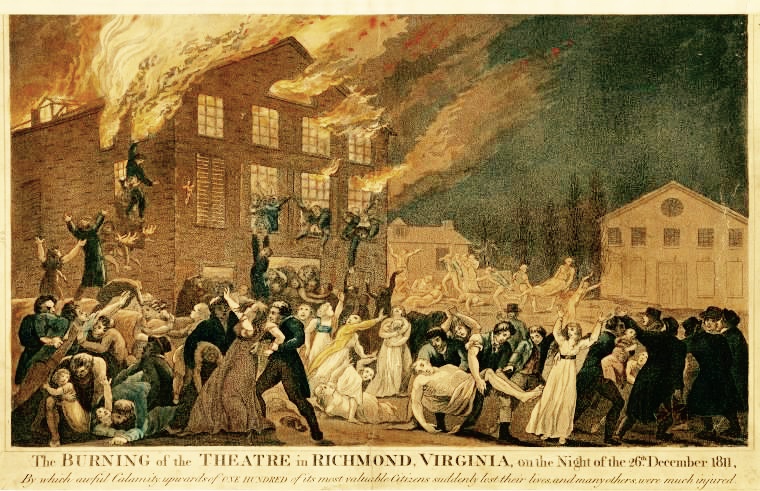
The Richmond Theater fire occurred in Richmond, Virginia, United States on Thursday, December 26, 1811. It devastated the Richmond Theater, located on the north side of Broad Street between what is now Twelfth and College Streets. The fire, which killed 72 people including many government officials, was the worst urban disaster in American history at the time. The Monumental Church was erected on the site as a memorial to the fire
1807
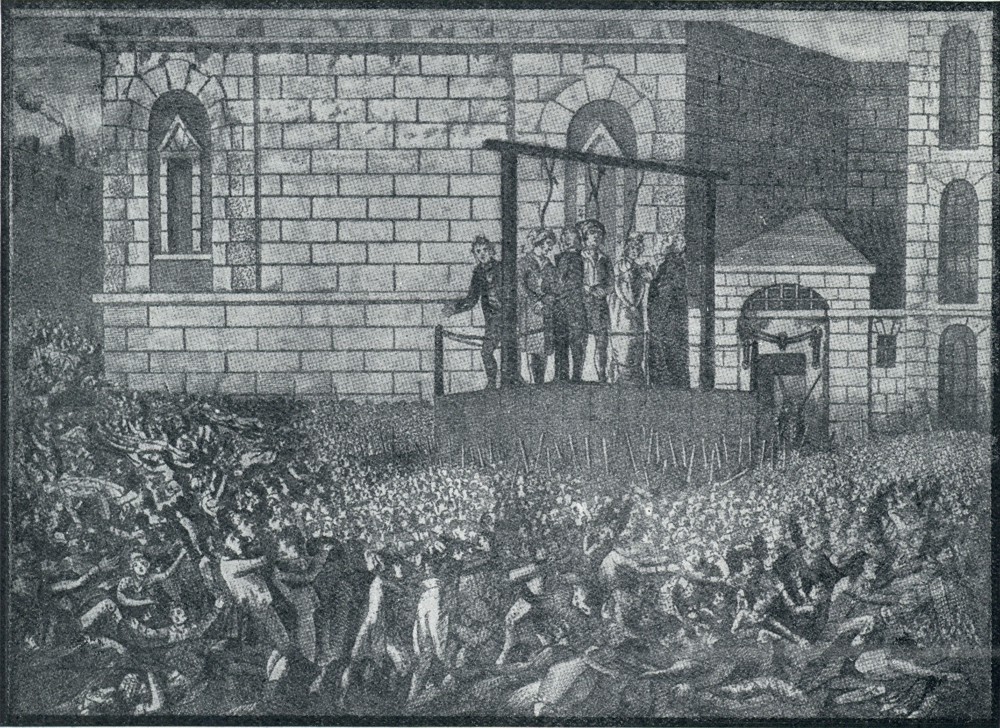
A crowd of around 40,000 had gathered in front of Newgate Prison near the Old Bailey on the morning of 23 February 1807 to witness Holloway and Haggerty’s execution.People from as far as Hounslow and Bagshot came to observe the sentences be carried out, clambering onto carts, lampposts, and window ledges to spectate. “Not only the space in front of the Old Bailey, but all the windows and the tops of houses adjoining, were crowded with spectators, and the avenues to the remotest point…” The crowd had been so thick at the north side of the Old Bailey that its movements were compared to ocean waves
John Holloway further excited the crowd by proclaiming en route to the scaffold “Gentlemen, I am quite innocent of this affair. I never was with Hanfield, nor do I know the spot. I will kneel and swear it.” Around 08:06-08:08 the executioner pulled the lever and the hatch beneath Holloway, Haggerty, and Godfrey was dropped. The overheated, impatient spectators surged forward towards the scaffolding to obtain better views of the executions. Observers from the corner of Green Arbor Lane were suddenly startled when the axletree of a wooden cart overloaded with people broke, collapsing the cart and knocking those on top of it to the ground. Subsequently, a pieman a few yards away dropped a large basket of merchandise in the uproar, falling while attempting to pick it up and then tripping others who were then trampled with him
When the wooden cart collapsed, the spectators who had fallen off of it were crushed to death as the people behind the cart pushed forward to climb on top (either to watch the executions or escape the stampede). The pressurised crowd pushed back against the cart, causing yet more carnage and possibly tripping the pieman who was just yards away. These dual-accidents startling the disorganised crowd on the relatively narrow street resulted in dozens of people being killed and many others being injured.The scene lasted for over an hour as individuals slowly cleared out from the area, with a significant portion of the crowd remaining long after the executions were carried out. Once authorities had cleared out the remaining spectators there seemed to be around 100 injured or dead individuals lying in the street in front of Newgate Prison. Newspapers reported on death tolls between 20 and 30, but one contemporary account describes 34 dead and at least 15 serious injuries. The injured were taken to St Bartholomew’s Hospital.
en.wikipedia.org
1727

The following is an extract from the Parish Registers of Burwell:
“At about 9 o’clock on the evening of September 8th 1727, fire broke out in a barn, in which a great number of persons were met together to see a puppet show. In the barn were a great many loads of new light straw. The barn was thatched with straw which was very dry, and the inner roof was covered with old dry cobwebs, so that the fire like lightening flew around the barn in an instant. There was but one small door, which was close nailed up, and could not easily be broken down. When it was opened, the passage was so narrow and everybody so impatient to escape that the door was presently blocked up, and most of those that did escape, which was but very few, were forced to crawl over the bodies of those that lay in a heap by the door.”
1711
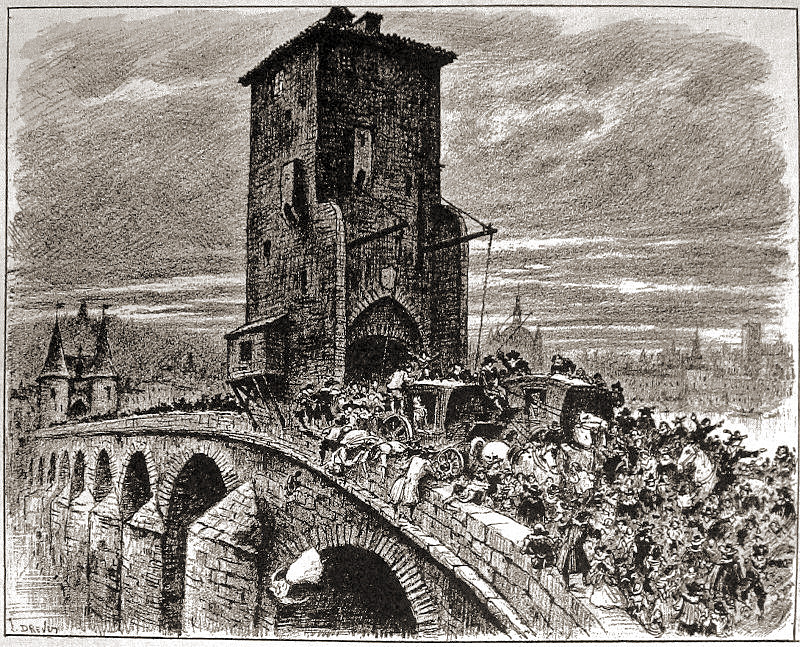
0140
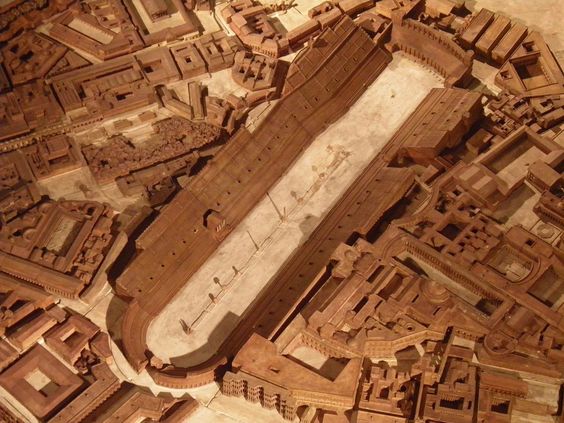
Circus Maximus partial stadium collapse. 140 AD – Rome, Italy. The Circus featured seating for 250,000 – five times that of the colosseum, and later additions increased seating to more than 270,000. The lower tiers (for the upper class) were made of stone and marble, and the upper tiers (for the less affluent) were wooden. In 140 AD the wooden upper tier partially collapsed killing over 1,000 people, and although there is no extant account it is considered the worst sporting disaster in history.
0027
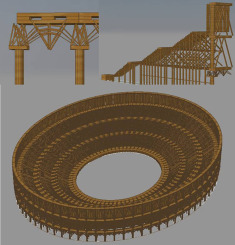
In 27 AD, an apparently cheaply built wooden amphitheater constructed by an entrepreneur named Atilius collapsed in Fidenae, resulting in by far the worst stadium disaster in history. At least 20,000 were killed and many more injured out of the total audience of 50,000.
The emperor Tiberius had banned gladiatorial games, it seems, and when the prohibition was lifted, the public had flocked to the earliest events, so a large crowd was present when the stadium collapsed. At the time of the incident, Tiberius was in Capri, where he had a secure getaway, but rushed to Fidenae to assist the victims of this incident.
The Roman Senate responded to the tragedy by banning people with a fortune of less than 400,000 sesterces from hosting gladiator shows, and also requiring that all amphitheaters built in the future be erected on a sound foundation, inspected and certified for soundness. The government also “banished” Atilius.





